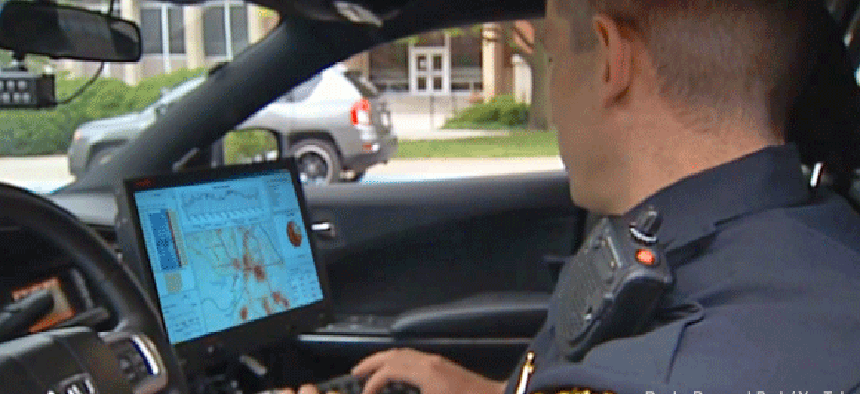Visual analytics app gives police a nearly omniscient view

Purdue University researchers' VALET combines crime, traffic, geospatial, weather and other data on one screen for real-time situational awareness and predictive capabilities.
Purdue University researchers have developed a visual analytics tool that can give police and emergency responders a real-time view of a location, layered with crime, traffic, geospatial, weather and other data. The goal, researchers say, is to give law enforcement agencies predictive, and well as responsive, capabilities.
Called the Visual Analytics Law Enforcement Toolkit, or VALET, the tool allows officers to analyze high-volume criminal data with the surrounding context, such as traffic conditions, civil incident data and any related emergency management events, the project leaders said in an announcement. It also can layer in weather information, zoning tracks, census and demographic data – and even the moon phase.
The tool has a variety of potential uses. It could be used at headquarters to plan regular routes based on crime rates and the times of the day or week crimes are most likely to occur, even factoring in weather forecasts or scheduled major events that could gum up roads. The researchers say VALET’s statistical analysis of historical data and temporal prediction algorithms can forecast future criminal, traffic and civil incident levels with 95 percent confidence. It also would be effective in managing the response to a major incident, where outside factors could affect the response.
Aside from HQ, it’s also available to officers in patrol cars, who can access it via their on-board laptops. And a mobile version, iVALET, works with iPhones and iPads for officers who are on foot.
"Providing this type of situational awareness gives us the higher level of assessment so we can better cover high-crime areas or give officers context of what is happening so they know what they are walking into when on patrol or responding to a call," said John K. Cox, Purdue University chief of police.
VALET was developed at Purdue’s Homeland Security Center of Excellence in cooperation with university police, the West Lafayette PD, the Tippecanoe County Sheriff's Office and the Ohio State Highway Patrol.
As a post from the researchers shows, a sample screen might include a map of a selected location surrounded by a line graf, calendar view, clock view and crime history, with a time slider that ties the data together so, for example, crime reports can be viewed over a selected time. The screen also includes a Twitter widget that could help detect unusual activity, such as a protest or riot.
It’s what the researchers call “spatiotemporal exploration of multivariate data sets and police records.” In other words, using maps and multiple data feeds to give police and responders better situational awareness and the ability for proactive response.
Police department have been tapping into predictive analytics as a crime-solving and -prevention tool, and have had success in places such as Charleston, S.C., and Alexandria, Va.
Purdue’s VALET could represent the next step in making use of available data, by tying it all into one interactive screen. Trial versions of the program are available from Purdue's Visual Analytics for Command, Control and Interoperability Environments, known as VACCINE.
On a side note, for anyone wondering about the moon phase layer in VALET, police officers and emergency room doctors and nurses have long believed that the full moon has an impact on crime rates and psychological disorders. But for what it’s worth, research indicates otherwise.
In 2012, a Canadian university’s school of psychology conducted a three-year study of emergency room patients and found seasonal correlations (more anxiety in the spring) but no discernible impact from the lunar phases, with one exception – a drop in anxiety disorders during the last lunar quarter studied. A 2011 study by the University of Southern Illinois on crime rates and lunar cycles also found no connection.
Still, it can’t hurt to be aware of a full moon. If nothing else, it means visibility at night will be better.





